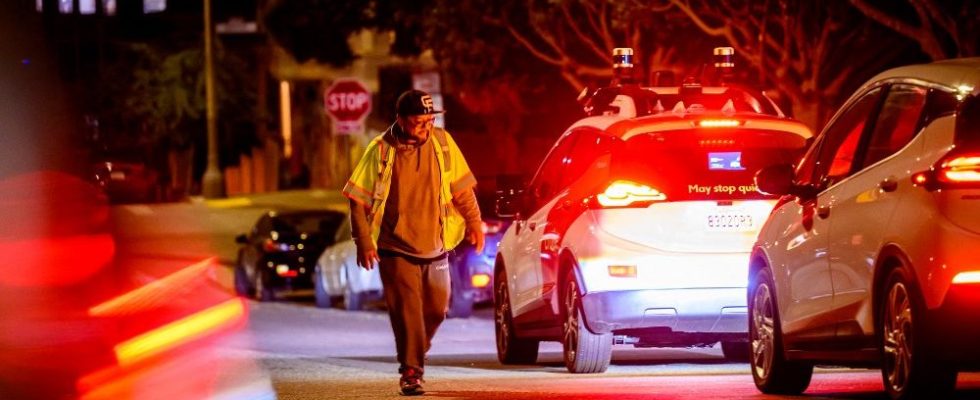Did autonomous taxis one day suddenly stop at the same place in San Francisco, blocking an intersection for several hours in an unexplained way?
This is the question asked by a reader, who questioned 20 Minutes about an article published on December 4, 2023 in the digital edition of La Libre Belgique. The column in question tells the story of a “demonstration” by automated taxis, which allegedly blocked traffic for no apparent reason in the American city.
Beyond the humorous image of the demonstration, this reader wonders: “The facts reported, if they are true, are worrying! “.
The article in question (reserved for subscribers), entitled “The paradox of artificial super intelligence”, contains a passage about autonomous taxis, in circulation since the summer of 2022 in San Francisco. In the paragraph in question, columnist Fabrizio Bucella, author of the article and doctor of physics, relates an unexplained “silent demonstration” organized by autonomous taxis from the Cruise company. The latter would have “completely” blocked traffic, “no longer wanting to move” despite the efforts of the engineers.
Several cases of autonomous taxis blocking traffic
As its author confirms with 20 minutesthe passage from this column should be understood in a humorous tone: “The taxis did of course not demonstrate in the same way that a human would have done, but the fact is that they were stopped at a place where They shouldn’t have been.”
If the term “demonstration” is to be taken in the second degree in the article in question, the problem of blockages caused by autonomous taxis in the United States is very real. The American press as well as Internet users have in fact reported several blockages caused by groupings of automated taxis from the Cruise company, which occurred simultaneously in San Francisco on June 28, 2022. The Cruise company, which belongs to the General Motors group, had been authorized at the beginning June 2022 to market its autonomous taxi rides.
As reported by the local newspaper San Francisco Examiner, these taxis caused a blockage for about two hours, “at the corner of Gough and Fulton streets.” The newspaper also states: “The incident was only resolved when the robot cars were manually pushed out of the way by Cruise staff. “. After several episodes of blockages as well as accidents, the company finally withdrew all its vehicles from circulation in October 2023, after being banned from Californian roads, as reported by the Reuters news agency.
Simple breakdowns or a sign of uncontrollable artificial intelligence?
Questioned by the specialized media Tech Crunch about the blockage of June 28, the Cruise company communicated: “We had a problem earlier this week which caused some of our vehicles to group together”. “While the issue has been resolved and no passengers were affected, we apologize to anyone who was inconvenienced.” However, the company did not comment on the causes of this malfunction.
In his column for La Libre Belgique, scientist Fabrizio Bucella uses this example among others to illustrate the problem of the limits of the empowerment of artificial intelligence. “At this stage we do not know exactly what caused this stopping of vehicles, it could be a network failure and something circumscribed,” explains the professor at the Free University of Brussels.
“A stage of learning”
“I can’t say that this is really the case here, but at a given moment we reach a stage where this type of program is no longer controlled, we enter a little into this zone where neural networks produce results which we have difficulty explaining. This is for example the case of the algorithms of social networks like Facebook, the code of which no one can really explain in detail because it is so complex.”
For the autonomous car specialist Michel Parent, former research director at Inria (National Institute for Research in Digital Sciences and Technologies), this type of problem is indeed to be attributed to the development of artificial intelligence, rather than to a breakdown.
“These vehicles do not yet operate with fully developed artificial intelligence that would be equal to that of a human, and therefore cannot predict all situations. This type of problem is a stage of learning.” The specialist, however, reassures regarding the autonomy of this type of vehicle, and affirms that it will always be possible to regain control after the fact to correct problems in the system.
The specialist also puts into perspective the number of accidents produced by autonomous cars in comparison with those caused by humans, which remains statistically lower.

